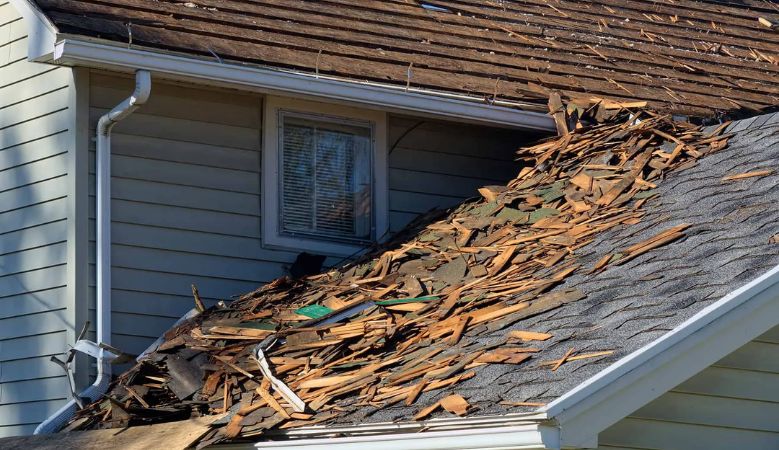Roofs serve as the first line of defense against environmental hazards, be it extreme weather conditions, UV rays, or other external factors. While residential roofs are designed with a focus on aesthetics and durability, commercial roofing systems have different requirements and considerations. They need to be robust, long-lasting, and must cater to the unique needs of commercial buildings. This article will delve deep into the intricacies of commercial roofing, its types, and essential factors to consider.
1. What Constitutes a Commercial Roofing System?
Unlike their residential counterparts, commercial roofs are typically flat or have a low slope. This design choice often relates to the building’s size – it’s more feasible and cost-effective to have flat roofs for large commercial buildings. However, this also means commercial roofs need specialized materials and systems to ensure water drainage and durability.
2. Types of Commercial Roofing Systems
Several types of commercial roofing systems cater to different needs and budgets:
Built-Up Roofing (BUR): This is the traditional tar-and-gravel roof and consists of multiple layers for added protection. BUR is known for its durability and waterproofing capabilities.
Metal Roofing: While more common in residential settings, metal roofs are also an option for commercial buildings. They’re durable, resistant to extreme weather conditions, and come in various styles and finishes.
Modified Bitumen Roofing: This is an evolution of BUR but uses reinforced roof fabrics that act as “carriers” for bitumen, which is then applied to the roofing surface. It offers better flexibility and weather resistance.
Single-Ply Membrane: These are sheets of rubber and other synthetics that can be ballasted, mechanically fastened, or chemically adhered to insulation to provide a layer of protection to the building. Common types include TPO, EPDM, and PVC.
Green Roofing Systems: These are increasingly popular for their environmental benefits. Green roofs are covered with plants and can improve urban air quality, reduce the urban heat island effect, and provide insulation to reduce heating costs.
3. Factors to Consider When Choosing a Commercial Roofing System
Durability: Given the significant investment, you’d want the roof to last. Consider materials and systems known for their longevity.
Weather Resistance: Depending on the location, the roof might face different environmental challenges. In places with heavy snow, for instance, the roof must handle the weight and ensure proper drainage.
Maintenance Needs: Some roofing systems require more maintenance than others. Factor in these costs and the effort needed over the roof’s lifespan.
Cost: While it’s essential to invest in quality, budgets are always a concern. Ensure you’re getting value for your money.
Environmental Impact: For businesses keen on sustainability, choosing eco-friendly materials and systems is crucial.
4. The Importance of Professional Installation
Commercial roofs are complex structures, and their installation or repair isn’t a DIY project. Professional contractors bring expertise, the right tools, and an understanding of the local climate and challenges. A properly installed roof ensures longevity, better performance, and fewer maintenance woes.
In regions with unique climatic challenges, like Wyoming with its cold winters and sometimes intense summer heat, it’s crucial to work with professionals who understand the local nuances. If you’re considering a commercial roofing project in such areas, seeking out specialists in commercial roofing Wyoming would be an astute move.
5. Regular Maintenance: The Key to Longevity
Commercial roofs, given their flat structure, are prone to pooling water, debris accumulation, and wear and tear. Regular inspections and maintenance can preempt significant problems, extend the roof’s lifespan, and ensure it performs optimally. This includes clearing drains, checking for signs of damage, sealing any minor cracks or gaps, and ensuring insulation is intact.
6. Future of Commercial Roofing: Sustainability and Innovation
The roofing industry, like many others, is evolving with a keen focus on sustainability and technological innovation. New materials, including solar tiles, cool roofs designed to reflect more sunlight and absorb less heat, and innovative insulation solutions, are making their way into the market.
Conclusion
A commercial roofing system is more than just a protective cover for a building. It’s a significant investment that impacts the building’s energy efficiency, safety, and long-term value. Whether you’re replacing an old roof or embarking on a new construction project, understanding the basics of commercial roofing, and working with professionals, especially those familiar with local challenges (like those experienced in commercial roofing in Wyoming), can make a world of difference. As with all things construction-related, knowledge, preparation, and expert guidance are the pillars of a successful roofing project.
Read more; How to choose the right retractable roof system for your property


